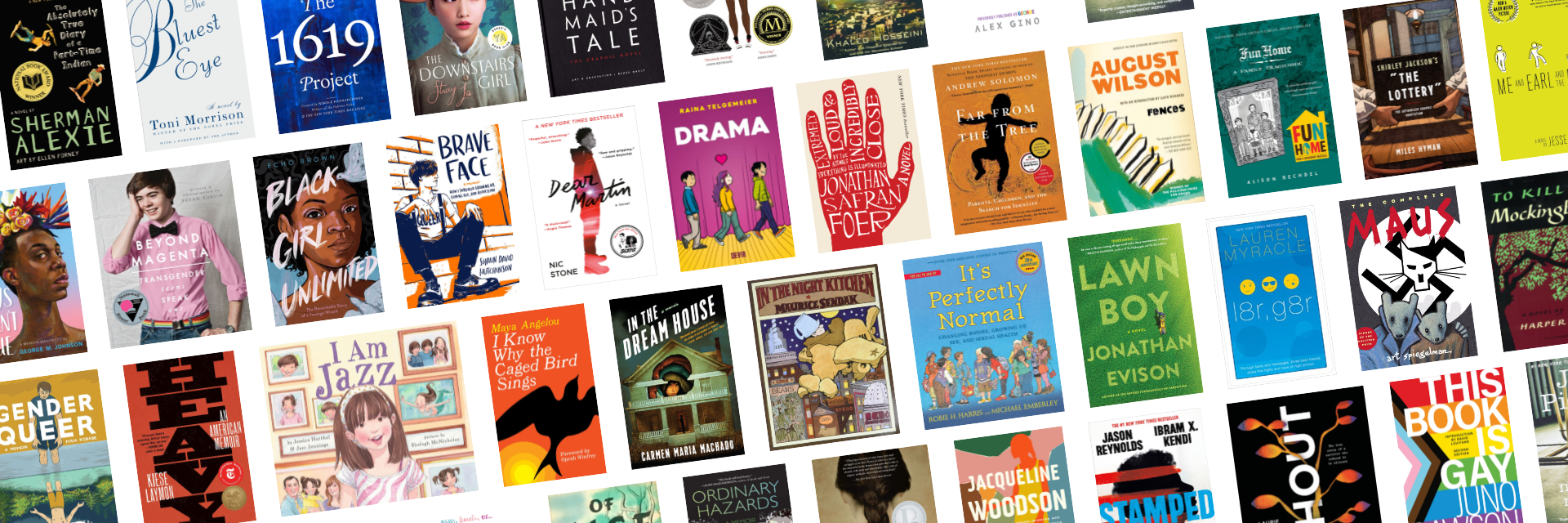
Banned in the USA: Rising School Book Bans Threaten Free Expression and Students’ First Amendment Rights (April 2022)
Book bans in public schools have recurred throughout American history, and have long been an issue of concern to PEN America, as a literary and free expression advocacy organization. Over the past nine months, the scope of such censorship has expanded rapidly. In response, PEN America has collated an Index of School Book Bans, offering a snapshot of the trend. The Index documents decisions to ban books in school libraries and classrooms in the United States from July 1, 2021 to March 31, 2022.
While this is the first time PEN America has conducted a formal count of books banned, the organization has fought back against book bans for decades. In 2016, PEN America published Missing from the Shelf: Book Challenges and Lack of Diversity in Children’s Literature, which described instances of ‘soft censorship’ taking place in schools and libraries in response to parents’ challenges of books. The report also highlighted the disproportionate targeting of books by or about people whose identities and stories have traditionally been underrepresented in children’s and young adult literature, such as people of color, LGBTQ+ individuals, or persons with disabilities.
Today, state legislators are introducing — and in some cases passing — educational gag orders to censor teachers, proposals to track and monitor teachers, and mechanisms to facilitate book banning in school districts. At the same time, the scale and force of book banning in local communities is escalating dramatically. In recent years PEN America has typically encountered a handful of such cases each year. The findings in this report demonstrate a profound increase in both the number of books banned and the intense focus on books that relate to communities of color and LGBTQ+ subjects over the past nine months.
Contents
- Alarming Trends
- What is a School Book Ban?
- What Types of Book Bans are Taking Place in Schools?
- How should School Districts Approach Book Reconsideration Processes?
- Are School Boards Following Their Policies?
- What Role is Political Pressure Playing in Book Banning?
- Which Authors are Banned the Most?
- What Types of Books are Being Banned?
- Who are the Intended Readers of the Books that are Being Banned?
- What Stories are Being Banned?
- Where are Book Bans Happening?
- Are Books Going Back on the Shelves?
- Conclusion
- Methodology
- Acknowledgements
- Link to Index
Alarming Trends
-
- In total, for the nine-month period represented, the Index lists 1,586 instances of individual books being banned, affecting 1,145 unique book titles. This encompasses different types of bans, including removals of books from school libraries, prohibitions in classrooms, or both, as well as books banned from circulation during investigations resulting from challenges from parents, educators, administrators, board members, or responses to laws passed by legislatures. These numbers represent a count of cases either reported directly to PEN America and/or covered in the media; there may be other cases of bans that have not been reported and are thus not included in this count.
-
- The Index lists bans on 1,145 titles by 874 different authors, 198 illustrators, and 9 translators, impacting the literary, scholarly, and creative work of 1,081 people altogether.
-
- The Index lists book bans that have occurred in 86 school districts in 26 states. These districts represent 2,899 schools with a combined enrollment of over 2 million students.
-
- It is not just the number of books removed that is disturbing, but the processes–or lack thereof–through which such removals are being carried out. Objections and challenges to books available in school are nothing new, and parents and citizens are within their rights to voice concerns about the appropriateness and suitability of particular books. In order to protect the First Amendment rights of students in public schools, though, procedural safeguards have been designed to help ensure that districts follow transparent, unbiased, established procedures, particularly when it comes to the review of library holdings. Of 1,586 bans listed in the Index, PEN America found that the vast majority (98%) have involved various departures from best practice guidelines outlined by the National Coalition Against Censorship (NCAC) and the American Library Association (ALA). Such guidelines have been designed to ensure rigorous standards and to avoid ad hoc, highly irregular acts that could run afoul of relevant legal doctrine. These guidelines include the filing of written, formal challenges by parents or local residents; the formation of review committees, generally comprised of librarians, teachers, administrators, and community members; and that books are to remain in circulation during the reconsideration process until a final decision is made. Challenges to library books and curricular and classroom materials are meant to happen first at the school-level, and then, if a decision is appealed, at the district-level. While the Supreme Court has recognized the “broad discretion” granted to local school boards in the “management of school affairs,” that discretion does not negate the responsibility of engaging in proper, considered processes concerning selections or removals. Rather, per Pico, school boards must exercise their discretion with respect to matters of education “in a manner that comports with the transcendent imperatives of the First Amendment.” News reports from school districts around the country indicate that this directive is being eschewed, as the responsibility of local school boards to employ appropriate safeguards and best practices in these decisions is being widely abrogated.
-
- Of all bans listed in the Index, 41% (644 individual bans) are tied to directives from state officials or elected lawmakers to investigate or remove books in schools. This is an unprecedented shift in PEN America’s long history of responding to book bans, from the more typical pattern in which demands for book removals are initiated by local community members. As noted below, book banning, as a form of censorship, implicates First Amendment prohibitions on the ability of government entities to ban or punish expression, making these documented efforts by lawmakers all the more concerning.
-
- Of 1,145 unique titles listed in the Index, 819 are works of fiction (72%), 537 are classified as YA (young adult) (47%), and 209 (18%) are children’s picture books. We also recorded bans on 31 graphic novels and 32 verse novels, both forms of literature that are often used to engage reluctant readers.
-
- Among the titles in the Index, there are common themes reflecting the recent backlash and ongoing debates surrounding the teaching and discussion of race and racism in American history, LGBTQ+ identities, and sexual education in schools. Of the titles in the Index, 467 contain protagonists or prominent secondary characters of color (41%), and 247 directly address issues of race and racism (22%); 379 titles (33%) explicitly address LGBTQ+ themes, or have protagonists or prominent secondary characters who are LGBTQ+; 283 titles contain sexual content of varying kinds (25%), including novels with sexual encounters as well as informational books about puberty, sex, or relationships. There are 184 titles (16%) that are history books or biographies. Another 107 titles have themes related to rights and activism (9%).
Beyond the scope of this report, there are many school districts where proper reconsideration policies have been followed, and where decisions have been made to keep books on library shelves and in classrooms. But the sheer number of bans identified in the Index demonstrates that there are many places where a censorious outcome is prevailing instead. These findings overlap and align with those recently released by the American Library Association (ALA) for 2021, which document an unprecedented number of book bans in public schools and libraries. This report confirms that these bans are overwhelmingly happening in districts where school authorities are not following best practice guidelines to protect students’ First Amendment rights, often making opaque or ad hoc decisions, in some cases in direct contravention of existing policies.
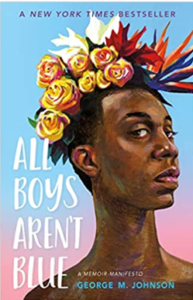
“We have an issue in this country, specifically when it comes to young adults, that we assume that there are topics that are too heavy for them to read or to understand. I am not a believer of that. . . . There is this belief that if we keep these things away from the youth, that they won’t indulge in them, when the reality is [that] us keeping resources, and us keeping these stories, away from them doesn’t stop them from going through the same situations. It just means that they don’t have the knowledge or the education to handle those situations in a way that can be best suited for them.”
– George M. Johnson, author of All Boys Aren’t Blue, on the PENPod in November 2021
What is a school book ban?
PEN America defines a school book ban as any action taken against a book based on its content and as a result of parent or community challenges, administrative decisions, or in response to direct or threatened action by lawmakers or other governmental officials, that leads to a previously accessible book being either completely removed from availability to students, or where access to a book is restricted or diminished.
It is important to recognize that books available in schools, whether in a school or classroom library, or as part of a curriculum, were selected by librarians and educators as part of the educational offerings to students. Book bans occur when those choices are overridden by school boards, administrators, teachers, or even politicians, on the basis of a particular book’s content. The phrase “book ban” does not apply to initial decisions by a school district or school on which books to purchase or assign to students. It does not refer to situations in which educators initially determine that certain books are more appropriate for access at or above particular grade levels. Nor does it apply to situations where professional educators and administrators engage in regular curriculum review or updates and make decisions about which books will or will not be assigned in class. Likewise, if books are deaccessioned from libraries following best practices of collection maintenance and “weeding” that are content-neutral, and the result of regular updating, that is not a ban. A book ban occurs when an objection to the content of a specific book or type of book leads to that volume being withdrawn either fully or partially from availability, or when a blanket prohibition or absolute restriction is placed on a particular title.
School book bans take varied forms, and can include prohibitions on books in libraries or classrooms, as well as a range of other restrictions, some of which may be temporary. It is important to note that some decisions to remove or restrict books can be the outcome of established, appropriate processes, but nonetheless are of concern because they result in diminished access to literature for young people, or the diminished ability of librarians or teachers to use particular educational materials. Book removals that follow established processes may still improperly target books on the basis of content pertaining to race, gender, or sexual orientation, invoking concerns of equal protection in education.
In the First Amendment Encyclopedia, librarian Susan L. Webb addressed the issue: “Opponents of publications sometimes use the tactic of restricting access rather than calling for the physical removal of books.” In this sense, a range of tightened restrictions on previously accessible curricular materials and library books, even when they fall short of absolute bans, can nonetheless undermine students’ ability to access information and ideas, and learn, and are thus of concern when examining school book bans, too.
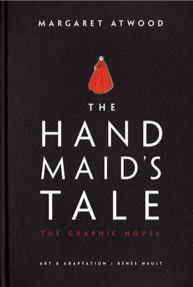
“I had thought America was against totalitarianisms. If so, surely it is important for young people to be able to recognize the signs of them. One of those signs is book-banning. Need I say more?”
– Margaret Atwood, responding to news of her book being banned in Leander, Texas
What types of book bans are taking place in schools?
In total, the Index lists 1,586 decisions to ban books between July 1, 2021, and March 31, 2022. This includes bans on 1,145 unique totals, though the same title can be banned in libraries, classrooms, or both, in different districts. The banning of a single book title could mean anywhere from one to hundreds of copies are pulled from libraries or classrooms in a school district.
PEN America differentiates between four discrete categories of bans.
|
Type of Ban |
# of Books Banned |
# of Titles Banned |
# of Districts |
|
Banned in Libraries and Classrooms |
184 |
143 |
38 |
|
Banned in Libraries |
197 |
180 |
19 |
|
Banned in Classrooms |
474 |
470 |
15 |
|
Banned Pending Investigation |
731 |
506 |
40 |
Banned in libraries and classrooms: The Index counts 184 bans on 143 unique book titles that are banned in both school libraries and classrooms, across 38 school districts. These represent instances where individual titles were placed off-limits for students in either some or all libraries and classrooms, and simultaneously barred from inclusion in curricula.
Banned in libraries: The Index counts 197 bans on 180 unique book titles in school libraries, across 19 districts. These represent instances in which administrators or school boards have removed individual titles from school libraries where they were previously available. Books in this category are not necessarily banned from classroom curriculum. This category includes decisions to ban a book from one school-level library (e.g. a middle school) even if it is included in libraries for higher grades (e.g. a high school), or other forms of grade-level restrictions. In many such cases, the decisions to ban books from lower-level libraries do not align with publishers’ age recommendations.
Banned in classrooms: The Index counts 474 bans on 470 unique book titles in classrooms across 15 districts. These represent instances where school boards or other school authorities have barred individual titles from classroom libraries, curriculum, or optional reading lists. These constitute bans on use in classrooms, even in cases where the books may still be available in school libraries.
Banned pending investigation: The Index counts 731 bans on 506 unique book titles in 40 districts. These are instances where a title was removed during an investigation to determine what restrictions, if any, to implement on it. The Index records these bans, even if only temporarily enforced and even if books have ultimately been returned to shelves, because such removals are counter to procedural best practices from the National Coalition Against Censorship (NCAC) and the American Library Association (ALA), which state that a book should remain in circulation while undergoing a reconsideration process. In cases where such investigations have concluded, and particular titles have been further restricted or banned as a result, PEN America uses one of the categories above. Though timelines vary across districts, pending investigations can drag out, resulting in bans on particular titles that last months at a time.
Across these four categories, there are also cases where books are restricted in schools, which result in bans for some students who previously had access to them. The Index counts 38 such restrictions on 34 unique book titles. This includes instances when a book is made newly unavailable for some grade levels or moved from general circulation in a school library to a restricted section, as happened with Lawn Boy by Jonathan Evison in Novi Community District, Michigan, or when a book is banned from libraries and classrooms, but restricted to a school’s counseling centers or teacher resource areas, such as happened with Call Me Max by Kyle Lukoff in the Carmel Clay School District, Indiana, or with Heather Has Two Mommies by Lesléa Newman, in Pennridge, Pennsylvania. In Bristow Public Schools in Oklahoma, five literary classics–Brave New World, Of Mice and Men, Lord of the Flies, I Know Why the Caged Bird Sings, and The Bluest Eye–were removed from library and classroom circulation, and restricted to AP English classrooms. In a further subset of cases, districts have restricted access to books unless parents sign a “permission” form allowing students to borrow them, as was done with Out of Darkness by Ashley Hope Pérez in Keller ISD, Texas. All of these restrictive policies place undue burdens or unfair hurdles on how some students access literature.
I come from a race of people for whom at one time in this country it was illegal to be taught to read…white people who taught Black people how to read were taking the risk of being punished…I think the same sensibilities that informed those people to make it a criminal act for Black people to read are the ancestors of the same people who are making it a criminal act for their own children to read and I don’t see a great deal of difference between that. There is some hysteria associated with the idea of reading that is all out of proportion to what…in fact happens when one reads.
— Toni Morrison, Nobel Prize laureate, on book banning, from PEN America’s “Evening of Forbidden Books,” 1982
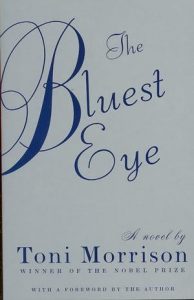
How should school districts approach book reconsideration processes?
In Board of Education, Island Trees Union Free School District v. Pico, 457 U.S. 853 (1982), the Supreme Court stated: “Our Constitution does not permit the official suppression of ideas.” The ruling affirmed the “special characteristics” of the school library, making it “especially appropriate for the recognition of the First Amendment rights of students,” including the right to access information and ideas. The central holding of Pico, on page 872 of the decision, was “[L]ocal school boards may not remove books from school library shelves simply because they dislike the ideas contained in those books and seek by their removal to prescribe what shall be orthodox in politics, nationalism, religion, or other matters of opinion.” The Court further recognized that while school boards have “broad discretion in the management of school affairs,” including to take action due to books’ “educational suitability” or “pervasive” vulgarity, a board’s motivation should be demonstrated by the use of “established, regular, and facially unbiased procedures for the review of controversial materials.” The Court noted that the school board in Pico used a “highly irregular and ad hoc” removal process that ignored literary experts, district superintendent, librarians, and teachers, as well as guidance from book-rating publications.
In alignment with the Supreme Court’s jurisprudence, the National Coalition Against Censorship (NCAC) and American Library Association (ALA) have developed guidelines for handling formal complaints to school library collections, which are meant to safeguard students’ First Amendment rights by limiting the ability of community members of school boards to exercise content- or viewpoint-based censorship. They recommend that community members complete formal reconsideration requests in writing to school principals, and that schools form “reconsideration” committees, made up of teachers, librarians, school administrators, and members of the community, who will receive training in intellectual freedom and library policies, before they read, discuss, and collectively reevaluate the availability of a particular book in the school. ALA guidelines make clear that committee members are to “set aside their personal beliefs” and use objective standards, and that books are to remain in circulation until the process is complete and a final decision is made. They also provide guidance on how school-level committees should make initial decisions before they can be appealed to district-level committees, which would then be formed to continue to evaluate a book title’s availability. Finally, the district committee’s decision could be appealed to the school board for a final, district-wide determination. As the NCAC explains, these kinds of policies help “ensure decisions about instruction advance fundamental pedagogical goals and not subjective interests.”
While it is possible for such school-level or district-level “reconsideration” committees to decide to remove or restrict books, legal precedent and expert best practices demand that committee members, and principals, superintendents, and school boards act with the constitutional rights of students in mind, cognizant that it is better to allow access to literature for those who might want it than to eliminate that access for all based on the concerns of any individual or faction.
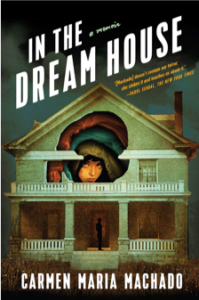
“Preventing children from reading my book, or any book, won’t protect them. On the contrary, it may rob them of ways to understand the world they’ll encounter, or even the lives they’re already living. You can’t recognize what you’ve never been taught to see. You can’t put language to something for which you’ve been given no language. Why do we not see these acts of censorship for what they are: shortsighted, violent and unforgivable?”
– Carmen Maria Machado, author of In The Dream House, in The New York Times.
Are school boards following their policies?
Analyzing the 1,586 bans listed in the Index, PEN America found that the vast majority (98%) involved departures of various kinds from best practice guidelines designed to protect students’ First Amendment rights. School authorities in many cases have made opaque or ad hoc decisions, in some cases circumventing existing policies. This trend is well-evidenced at the district-level. Of 76 districts that have banned books from school libraries in some way, only 43 have transparent policies which either follow or are substantially similar to the guidelines and best practices recommended by the NCAC and ALA. This means that in 33 districts where library books have been banned, there are either no public or transparent policies accessible online, or these policies fall short of established safeguards, in terms of their emphasis on objectivity or protection from content- or viewpoint-based manipulation. Further, we found that among these 76 districts only 11 have these reconsideration policies and have followed them consistently for every challenge, resulting in a relatively small number of bans, 33 in total.
Across the Index as a whole, just 4% of the 1,586 individual book bans have been the result of processes that began with the filing of formal challenges to library or classroom materials by community members. The other 96% of bans in the Index were initiated by school administrators or board members, in a wide range of ways, sometimes in response to comments from community members at board meetings, and rarely with the requisite written forms that most district policies officially require. These forms are important in that they require the complainant to demonstrate familiarity with the book as whole and to specify their objections in terms that can be reviewed. They are intended to guard against reliance on innuendo, unarticulated prejudices, assumptions, misunderstandings, outside pressure, or conjecture as a basis to ban books. In the words of the NCAC, such written forms help reviewers “assess the complainants’ judgment and motives.” Districts do vary in their processes, so not all administrators who initiated reconsideration committees or simply removed book titles from library shelves and classrooms of their own volition did so in contravention of specific applicable policies. But given the availability of long-established best practices concerning transparency and established procedures to uphold First Amendment rights in the context of challenges to school library books, the trends to the contrary are stark.
In Wicomico County, Maryland, in March, for example, the superintendent pulled All Boys Aren’t Blue by George M. Johnson after a board meeting during which public comment was dominated by complaints about the book. Reporting suggests that the superintendent was influenced by the fact that the book was being banned in nearby districts and across the country. In Canyons School District in Utah, and Orange County Public Schools in Florida, meanwhile, school leaders who pulled books without following their reconsideration processes have claimed it was not necessary to do so, precisely because no official complaints were filed.
Another issue, evident in the largest category of bans listed in the Index, is the removal of books from libraries while “pending investigation.” While many district policies and guidelines from NCAC and ALA make clear that books should remain in circulation while under a challenge or review, cases such as occurred in Goddard Public Schools in Kansas, show school boards removing materials before the proper procedures have taken place, in violation of those guidelines. Questions have also been raised about how challenges are being initiated, with reports that in Polk County, Florida, 16 library book titles were pulled and placed in “quarantine,” not as a result of an individual community member’s challenge, but after the district was sent a report by a stakeholder group, County Citizens Defending Freedom. In Prosper ISD, Texas, challenges to 82 books appear to have come about by the work of a local PAC, the ‘Prosper Citizen Group.’
“The librarian says that before this year she has only had one book challenged in many years working in the district. With the previous challenge, an American Library Association-recommended procedure was followed. The librarian had an informal discussion with the complainant, who wasn’t satisfied and filled out the reconsideration form. A review was formed with an administrator, a teacher, a community member, an English teacher, and the librarian. They read the book in its entirety and concluded it should remain on the shelf, and the complainant was satisfied. This time, the librarian says, no protocol was followed to her knowledge. She worries about the lack of transparency and books disappearing without any explanation and how that will affect the diverse student population.”
A librarian in Klein, ISD, Texas compares the recent effort to remove books in her district to years prior. As reported by School Library Journal.
As noted above, First Amendment school-related jurisprudence recognizes the discretion school boards and related bodies have in managing school-related affairs, including with respect to the literature available to students, as well as with respect to curricular requirements. That discretion does not negate the responsibility of the school board to engage in rigorous review processes that reflect both First Amendment safeguards and best practices. Yet, as with school libraries above, various recent instances of classroom book bans have been marred by procedural abrogation. Of 474 bans solely on curricular and classroom materials in the Index, only a handful, three, appear to have been the result of established, transparent procedures. Rather, many have been the result of ad hoc decisions and snap judgments in response to parental complaints, establishing a troubling trend.
In McMinn, Tennessee, for example, in January the school board took up and voted on removing Maus by Art Spiegelman from the curriculum at the request of a board member. Per a local community group, this decision went against the board’s existing policy, since no review committee was formed. Administrators for the Franklin Regional School District in Pennsylvania likewise recently paused teaching of Persepolis, an award-winning graphic novel by Marjane Satrapi, in the district’s ninth-grade honors English classes. The board suspended the curriculum after some parents complained, even though the book had been selected after undergoing a 30-day public curriculum display and comment period last year as part of normal curricular processes, and even though teachers were days away from beginning to teach it.
In other places, district leaders have agreed to remove books even from optional reading lists for high school students, such as in Hudsonville, Michigan, where parents demanded the removal of Half of a Yellow Sun, by Chimamanda Ngozi Adichie, from one such list. In Pitt County, North Carolina, English language arts teachers at one middle school allegedly “canceled plans” to read five books after a single parent objected, including: All American Boys, by Jason Reynolds and Brendan Kiely; Forged by Fire and Darkness Before Dawn by Sharon M. Draper, To Kill A Mockingbird, by Harper Lee, and Night by Elie Wiesel.
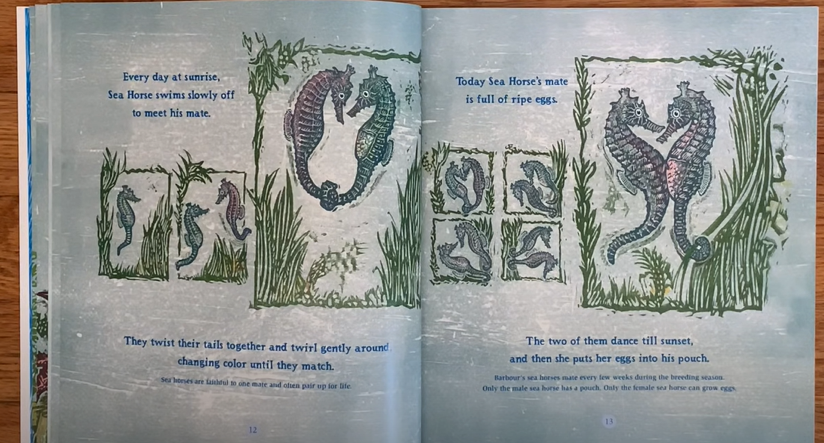
Pages 12-13 of this book are now barred from being displayed to students in Williamson County, Tennessee.
The momentum behind this wave of book banning is not only local. As many news outlets have reported, book bans have become a favorite tool for state-wide and national political mobilization, departing from prior patterns whereby such bans tended to originate locally and spontaneously. Local chapters of Moms for Liberty have collated and shared lists of books to be challenged on Facebook, and pressed their case to responsive school authorities. No Left Turn in Education and Parents Defending Education have curated lists of “radical” books that they view as “indoctrination,” and have actively sought to mobilize disaffected parents under the banner of “parents’ rights.” These efforts are having a widespread impact; even where books are not ultimately banned, and even when processes are being followed, these campaigns can inspire skittishness about teaching topics that might in any way be construed as taboo. In Williamson County, Tennessee, a challenge from a local Moms For Liberty chapter resulted in only one title banned from the curriculum, but six books were ascribed “instructional adjustments.” These six books were not banned in their entirety–and therefore are not listed in the Index–but wound up with restrictions placed on specific pages. Teachers are allowed to read Separate is Never Equal: Sylvia Mendez and her Family’s Fight for Desegregation by Duncan Tonatiuh, but cannot read pages 25-27 aloud to students. They can read Sea Horse: The Shyest Fish in the Sea by Chris Butterworth to students, but they cannot display pages 12-13.
The silencing effect of book bans and the threat to free expression and the First Amendment cannot be ignored. In many schools, professional educators also maintain classroom libraries, where they make available books that go beyond or differ from what is offered in the school library. The drive to prohibit and remove books is also impacting these collections, with teachers incentivized to remove books that might incur controversy. The bans themselves are often blanket in scope; in some districts, like Leander, Texas, the decision to remove eleven books from the district’s high school curriculum was accompanied by an explicit prohibition on these books being available in classroom libraries.
Cumulatively, these local challenges and national pressure campaigns are creating a climate where access to literature in school libraries and classrooms is being diminished on precisely the “highly irregular and ad hoc” basis that gave rise to First Amendment concerns in Pico. The overwhelming number of ad hoc bans reflected in the Index point to this disturbing trend, where removing books at the sign of any parental complaint — regardless of policy — is becoming expected and almost reflexive.
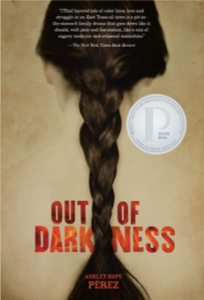
“Book challengers may convince themselves that they want to save the kids. But it’s a damaging myth that removing a story about painful aspects of human experience will in any way protect young people. This is like arguing that a school-wide moratorium on discussions of bullying will eliminate the problem. Silence is the real threat.”
— Ashley Hope Pérez, author of award-winning Out of Darkness, for Dallas Morning News
What role is political pressure playing in book banning?
In Texas, politicians have been especially assertive in exercising pressure to scrutinize school books. In October 2021, Republican State Representative Matt Krause sent a letter and list with 850 books to Texas school districts, asking them to investigate and report on which of the titles they held in libraries or classrooms. In an analysis of the list for Book Riot, Danika Ellis concluded that it was a “weird, jumbled mess,” and appeared to have been built using keyword searches in a library database, including numerous outdated titles and designed to sweep up any book with LGBTQ+ issues or characters, among other targets.
The pressure to investigate and remove books has clearly spurred banning efforts. In Texas, the result has been some mass removals of library books, in districts including Granbury ISD, which removed 130 titles, and North East ISD, which removed 432 titles, in both cases because these books needed to be “investigated” following their inclusion on the Krause list. In South Carolina, Governor Henry McMaster sent a letter to the state Superintendent of Education, Molly Spearman, in November, in which he specifically referred to the Fort Mill School District’s possession of Gender Queer: A Memoir by Maia Kobabe as an example of an obscene book available in schools. The district removed the book, and ten days later, permanently banned it from their libraries.
Across numerous states, political pressure has played a direct role in book bans in at least eight districts, resulting in diminished student access to 644 titles. Of all bans and restrictions listed in the Index, 41% have a direct tie to political pressure exerted in these eight districts in Texas, South Carolina, and Georgia. Such politically motivated book bans directly implicate the First Amendment concerns articulated by the Supreme Court in Pico to prevent politicians from exercising their own predilections in book removals or others from imposing ideological orthodoxy in schools.
“An increasing number of Americans seem willing to abandon previously hallowed democratic norms, including freedom of expression. Krause [Texas State Representative Matt Krause] has not banned the books on his list because he is not in a position to do so, but the chilling effect of such lists is incontrovertible.”
– Andrew Solomon, former President of PEN America, writing in the The New York Times.
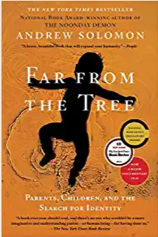
Another concerning trend is the focus on alleged obscenity in books, particularly when banning is encouraged by elected officials. For example, in November, Texas Governor Abbott sent a letter to the Texas Association of School Boards asking it to remove allegedly “pornographic” or “obscene” materials from school districts. After that Association responded that it had no regulatory authority over school districts, Abbott directed the Texas Education Agency, Texas State Library and Archives Commission, and the Texas State Board of Education, to “immediately develop statewide standards to prevent the presence of pornography and other obscene content in Texas public schools, including in school libraries” based on his labeling as “pornographic” several books that had been removed in schools. In his letter, Governor Abbott singled out two books for their content: Gender Queer by Maia Kobabe and In the Dream House by Carmen Maria Machado. Gender Queer is described by Simon & Schuster, as “an intensely cathartic autobiography” and “a useful and touching guide on gender identity—what it means and how to think about it.” In the Dream House is described by Gray Wolf Press as “tracing a harrowing relationship with a charismatic but volatile woman,” and a “wrenching, riveting book that explodes our ideas about what a memoir can do and be.” Both books contain sexual content and LGBTQ+ characters.
As a baseline matter, obscene material, as delineated by the Supreme Court in Miller v. California, 413 U.S. 15 (1973), does not enjoy First Amendment protections. The obscenity doctrine has been the subject of robust discussion, analysis, and critique, including, as noted by Elizabeth M. Glazer in her essay When Obscenity Discriminates, with respect to how the doctrine fails to align with nondiscriminatory treatment of LGBTQ+ representation, and has long been used to censor LGBTQ+ content (102 Nw. U. L. Rev. 1379 (2008)). As with the Texas situation noted above, there is a growing tendency to label material in schools as “obscene,” “pornographic,” and a corresponding push by politicians, parents, and administrators alike to use these labels as justification for the swift removals of books as well as circumvention of normal reconsideration processes. This is despite the fact that the books swept up in these bans would appear to fall short of any cognizable legal meaning of these terms, a point that has been made by other First Amendment experts (see insert below). In some cases, boards have argued that they can remove books immediately without any reconsideration process if they are deemed to be “pervasively vulgar,” or “educationally unsuitable,” invoking the exceptions laid out by Justice Brennan in Pico. But as emphasized in Pico, the question of whether the motivations of the school boards that remove these books are constitutionally permissible would be better elucidated if they adhered to rigorous process rather than ad hoc, highly charged acts. In other words, irrespective of the stated reason for a ban by lawmakers, school board members, or other school authorities–whether a book is labeled, for example, “obscene,” “pornographic,” “pervasively vulgar,” or “sexually explicit”–nothing in Pico or the guidance put forth by the NCAC and ALA exempts these officials from conducting a rigorous review via established processes.
On Obscenity
Although many politicians have made claims that books in school libraries are “obscene” or “pornographic”, these are terms with specific legal meanings. According to The First Amendment Encyclopedia, a material can only be deemed ‘obscene’ if it meets three criteria outlined in the Miller test, including:
- whether the average person applying contemporary community standards would find the work, taken as a whole, appeals to the prurient interest;
- whether the work depicts or describes, in a patently offensive way, sexual conduct specifically defined by the applicable state law; and
- whether the work, taken as a whole, lacks serious literary, artistic, political or scientific value.
The books that have been targeted for removal in American public schools with few, if any exceptions, would manifestly fail this test. For example, in Kitsap, Washington, when a parent asked that librarians be criminally charged for distributing the book Gender Queer as obscene material, the County Prosecutor declined to file charges, noting that the book does not meet the definition under state law. Mary-Rose Papandrea, a professor at the University of North Carolina School of Law, when asked about a potential similar investigation, likewise said it “would not take long,” because “[t]hey would look at the book and they would look at the law and they would say this book is not obscene under South Carolina law.” This point was also recently emphasized in a letter from the National Coalition Against Censorship to Representative Jared Patterson in Texas. The letter explains the narrow nature of Texas law regarding child pornography, before proclaiming: “It is immediately clear that no school district in Texas has ever purchased obscenity or child pornography.”
“I strongly believe in free expression. Truth writing. I write what I care about. I write what I want to know more about and what I think others may also find edifying and useful. Whether or not people decide to read my books is their choice. Only their choice, only for themselves.”
– Susan Kuklin, author of Beyond Magenta: Transgender Teens Speak Out
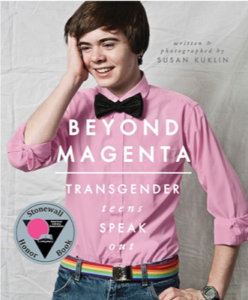
Which authors and books are banned the most?
PEN America has tracked bans involving titles by 874 different authors, 198 illustrators, and 9 translators, impacting the literary, scholarly, and creative work of 1,081 people altogether. We count authorship to include primary or secondary authorship or a contributing author to a collection.
Overall, bans listed in the Index have impacted 1,145 unique book titles. The majority of these book titles–930–have been banned in a single school district, while 146 have been banned in two districts, 48 have been banned in three or four districts, and 21 have been banned in five districts or more.
The most banned titles are:
-
- Gender Queer: A Memoir by Maia Kobabe (30 districts)
- All Boys Aren’t Blue by George M. Johnson (21 districts)
- Lawn Boy by Jonathan Evison (16 districts)
- Out of Darkness by Ashley Hope Pérez (16 districts)
- The Bluest Eye by Toni Morrison (12 districts)
- Beyond Magenta: Transgender Teens Speak Out by Susan Kuklin (11 districts)
The most frequently banned authors are listed below. Some have had one work widely banned across numerous districts, while others have had many different works targeted. These 43 authors have been banned at least 5 times, in at least 2 districts. A subset have had more than five different titles banned:
-
- Kobabe, Maia – 1 title – 29 bans – 29 districts
- Hopkins, Ellen – 14 titles – 27 bans – 9 districts
- Johnson, George M. – 1 title – 20 bans – 20 districts
- Evison, Jonathan – 1 title – 16 bans – 16 districts
- Morrison, Toni – 3 titles – 16 bans – 13 districts
- Myracle, Lauren – 5 titles – 16 bans – 10 districts
- Pérez, Ashley Hope – 1 title – 16 bans – 16 districts
- Levithan, David – 8 titles – 15 bans – 7 districts
- Reynolds, Jason – 6 titles – 14 bans – 7 districts
- Silvera, Adam – 6 titles – 13 bans – 5 districts
- Andrews, Jesse – 2 titles – 11 bans – 10 districts
- Atwood, Margaret – 3 titles – 11 bans – 7 districts
- Glines, Abbi – 9 titles – 11 bans – 4 districts
- Hutchinson, Shaun David – 5 titles – 11 bans – 6 districts
- Kuklin, Susan – 1 title – 11 bans – 11 districts
- Peters, Julie Anne – 8 titles – 11 bans – 3 districts
- Thomas, Angie – 2 titles – 11 bans – 9 districts
- Woodson, Jacqueline – 9 titles – 11 bans – 4 districts
- Kendi, Ibram X. – 3 titles – 10 bans – 6 districts
- Arnold, Elana K. – 7 titles – 8 bans – 3 districts
- Green, John – 2 titles – 8 bans – 7 districts
- Lee, Lyla – 8 titles – 8 bans – 2 districts
- Tamaki, Mariko – 2 titles – 8 bans – 7 districts
- Albertalli, Becky – 4 titles – 7 bans – 2 districts
- Anderson, Laurie Halse – 2 titles – 7 bans – 7 districts
- Craft, Jerry – 2 titles – 7 bans – 4 districts
- Dawson, Juno – 2 titles – 7 bans – 6 districts
- Draper, Sharon M. – 4 titles – 7 bans – 6 districts
- Gino, Alex – 2 titles – 7 bans – 6 districts
- Konigsberg, Bill – 4 titles – 7 bans – 4 districts
- Sanchez, Alex – 4 titles – 7 bans – 2 districts
- Alexie, Sherman – 1 title – 6 bans – 6 districts
- Johnson, Cathy G. – 1 title – 6 bans – 6 districts
- Picoult, Jodi – 3 titles – 6 bans – 4 districts
- Rhodes, Jewell Parker – 3 titles – 6 bans – 4 districts
- Sones, Sonya – 3 titles – 6 bans – 5 districts
- Stone, Nic – 2 titles – 6 bans – 5 districts
- Acevedo, Elizabeth – 2 titles – 5 bans – 5 districts
- Bechdel, Alison – 1 title – 5 bans – 5 districts
- Callender, Kacen – 4 titles – 5 bans – 3 districts
- Gottfred, B. T. – 3 titles – 5 bans – 2 districts
- Harris, Robie H. – 2 titles – 5 bans – 4 districts
- Telgemeier, Raina – 1 title – 5 bans – 5 districts
In another set of cases, a partial or whole series of books has been banned in a particular district. Most of these came from Central York, Pennsylvania, where a broad list of diversity resources, which included many series of books on it, was banned by the school board for use in school classrooms. Owing largely to the sweeping and ad hoc nature of this ban, 14 book series were named and targeted as series as part of it:
-
- the WeirDo series by Anh Do (17 titles)
- the Yasmin series by Saadia Faruqi (16 titles)
- the Sofia Martinez series by Jacqueline Jules (16 titles)
- the Desmond Cole Ghost Patrol Series by Andrés Miedoso (14 titles)
- the Lola Levine series by Monica Brown (10 titles)
- the Lola Reads series by Anna McQuinn (9 titles)
- the King & Kayla series by Dori Hillestad Butler (8 titles)
- the Mindy Kim series by Lyla Lee (7 titles)
- the Ruby and the Booker Boys series by Derrick Barnes (6 titles)
- the Jaden Toussaint, the Greatest by Marti Dumas (5 titles)
- the Girls Who Code series by multiple authors (4 titles)
- the Planet Omar series by Zanib Mian (4 titles)
- the Boy Called Bat series by Elana K. Arnold (3 titles)
- the Cilla-Lee Jenkins series by Susan Tan (3 titles)
Book series have been banned during investigations in other districts, too, such as the inclusion of the House of Night series by P.C. Cast on a challenged list in Indian River County Schools, Florida (12 titles), and the removal of The Gallup’s Guide to Modern Gay, Lesbian and Transgender Lifestyle by Jaime A. Seba (8 titles) in North East ISD, Texas.
“Removing or restricting queer books in libraries and schools is like cutting a lifeline for queer youth, who might not yet even know what terms to ask Google to find out more about their own identities, bodies and health.”
– Maia Kobabe, author of Gender Queer, in The Washington Post
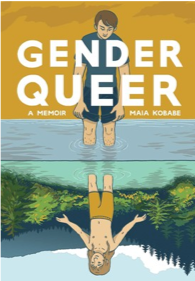
What types of books are being banned?
PEN America has analyzed banned books according to type, audience level, and key topics. The Index of 1,145 banned book titles includes:
Type of book
-
- Fiction: 819 titles
- Non-fiction: 321 titles
- Poetry collections: 5 titles
The majority of the books targeted have been works of fiction (71.5%), however 28% are non-fiction titles, which include history books, analytical and/or personal essays, and children’s reference and informational works.
-
- Graphic novels: 31
- Verse novels: 32
Across both fiction and non-fiction categories, graphic and verse novels present small but notable subsets. Gender Queer, the most banned title in the Index, is an example of a graphic novel, a book where the story is told visually as well as with language, often using the traditional comic format. According to the Comic Book Legal Defense Fund, comics are “uniquely vulnerable” to being challenged because a single page or panel is easily taken out of context and there is a “lingering stigma” surrounding comics as “low-value speech.” Verse novels are books where the ‘story’ of the work is told all or nearly all in verse. Both of these types of books have often been used to help reluctant readers engage with literature in more accessible ways and their removals may close opportunities to reach students who struggle with literacy. Overall, the Index records 89 bans on graphic novels in school libraries and classrooms (6% of the total), and 54 bans on verse novels (3% of the total).
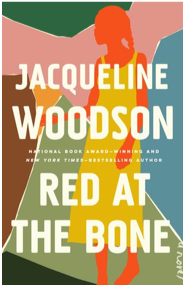
“Banning books put simply means giving some folks the opportunity to know less about a thing than others.”
– Jacqueline Woodson, author of Red at the Bone and Brown Girl Dreaming
Who are the intended readers of the books that are being banned?
Using common publishing standards, picture books are geared for children aged 0-5; chapter books for children aged approximately 6 to 8; Middle Grade ages 9-12, and young adult books for ages 13-17. The category of adult books includes books written for general adult audiences, and not explicitly for young people (including many classic novels).
-
- Picture Book: 209 titles
- Middle Grade: 123 titles
- Chapter Book: 150 titles
- Young Adult: 537 titles
- Adult: 126 titles
It is evident that the most frequently targeted books are those intended for “young adult” audiences, e.g., readers who are 13 to 17 years old. 47% of the book titles banned fall in this grade level. The Index also recorded 209 children’s picture book titles, or 18%.
“Hiding the beautiful range of humanity from young people does not keep young people from being themselves. Instead, it makes the road for queer and trans people to find ourselves harder and more damaging, and leaves a large majority of cisgender people who don’t know us, and therefore are much more likely to fear, and hurt, us. Positive representation saves lives.”
– Alex Gino, author of Melissa, on book censorship in schools
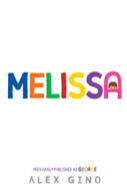
What stories are being banned?
PEN America categorized the types of stories — themes, characters, topics — reflected in the 1,145 titles that have been banned based on how these issues were identified by publishers or major reading databases. The results show a wide range of titles being targeted, with some consistent themes. Many of the categories below overlap.
Identities
-
- Titles that deal explicitly with LGBTQ+ topics, or have LGBTQ+ protagonists or prominent secondary characters have been a major target in the current wave of book bans. This is reflected in the Index, with 379 such titles (33%), including a distinct subset of 84 titles that deal with transgender characters and topics (7%).
- Fiction novels and non-fiction books with protagonists of color also made up a significant part of banned books in the Index, including 467 titles (41%).
- Books dealing with Jewish and Muslim characters and religious/ethnic themes have also been targeted, with 18 titles listed in the Index.
The move to ban both fiction and non-fiction books dealing with diverse characters and experiences–including racial, ethnic, and religious identities; gender identities and sexual orientations–reflects a backlash against attempts to bring a more diverse and inclusive set of voices and perspectives into the curriculum. This impacts students with these identities who may feel excluded; but also the opportunity for all students to learn about difference.
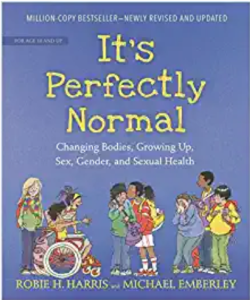
“I was warned that I shouldn’t write this book, and that no one else would ever publish any book by me if I did… I said, ‘I don’t care, this is the book I wanna do, and I have the right to do it.’ I made the editor agree that whatever is in the best interest of the child is going in this book no matter what anyone tells us…My question always is, what do teens and preteens need to know to stay healthy?”
– Author Robie Haris to Snopes.com in March 2022
Health-related and/or Sexual Content
A subset of 283 titles (25%) deal with sexual or health-related content. This includes 142 titles that deal explicitly with sex, 21 that cover abortion, 32 that cover teen pregnancy, and 14 that cover puberty. Many such books have been swept up in the current call to ban titles, including both works of fiction that contain such content, and non-fiction informational works, such as It’s Perfectly Normal: Changing Bodies, Growing Up, Sex, and Sexual Health by Robie H. Harris. Though Harris’s book has been frequently challenged since its initial publication in 1994, efforts to ban it had lessened in recent years, before the uptick of the past nine months.
This subset also includes 95 books that deal with sexual assault (8%), such as The Bluest Eye by Toni Morrison, The Handmaid’s Tale by Margaret Atwood, and Speak and Shout both by Laurie Halse Anderson. PEN America also identified 93 titles with sexual content related to LGBTQ+ characters and topics (8%), another subject targeted in multiple districts. This includes frequently banned titles All Boys Aren’t Blue by George M. Johnson, Lawn Boy by Jonathan Evison, and This Book is Gay by Juno Dawson.
Rights, Racism, and Social Justice
The Index identified 247 titles (22%) that address subjects related to race and racism, including fiction and non-fiction titles that primarily address racism in the United States, though not exclusively. This includes frequently banned titles such as Out of Darkness by Ashley Hope Pérez, How to Be an Antiracist by Ibram X. Kendi, and Dear Martin by Nic Stone, Additionally. PEN America identified 107 titles that address rights and activism (9%). This includes stories about historic and current struggles regarding civil and human rights both in the United States and globally, such as Good Trouble: Lessons from the Civil Rights Playbook by Christopher Noxon, which was banned while under review in Virginia Beach, VA, and We Are All Born Free: The Universal Declaration of Human Rights in Pictures by Amnesty International, banned in Central York, Pennsylvania. Other books that have been banned in some Texas districts seek to inform students of their rights, such as Teen Legal Rights by David L. Hudson Jr., Equal Rights by Maureen O’Connor, Transgender Rights and Protections by Rebecca T. Klein, and Rainbow Revolutions: Power, Pride, and Protest in the Fight for Queer Rights by Jamie Lawson and Eve Lloyd Knight. Each of these titles was included on the list of books to “investigate” sent to school districts by State Representative Matt Krause in October 2021.
History
The Index also includes 184 titles (16%) that cover historical topics or figures, and of those, 111 feature individuals or narratives centered on protagonists of color (10%). This includes 42 children’s picture books, including biographies of Rosa Parks, Martin Luther King Jr., Ruby Bridges, Duke Ellington, Katherine Johnson, Neil deGrasse Tyson, Cesar Chavez, Sonia Sotomayor, Nelson Mandela, and Malala Yousafzai. There were 61 biographies in total.
Death, Grief, and Suicide
Last, PEN America categorized 122 book titles (11%) that deal with topics related to death and grief. We also found 66 titles that discuss mental illness (6%), and a distinct subset of 39 titles (3%) that are specifically about suicide. The majority of books in these categories are works of fiction, many for a young adult audience, dealing with issues that teenagers frequently confront. Non-fiction titles in these categories are either picture books that explain feelings and emotions or memoirs written for either a young adult or adult audience. Some titles frequently banned in this category include the memoirs Fun Home: A Family Tragicomic by Alison Bechdel and Brave Face: A Memoir by Shaun David Hutchinson. The novel 13 Reasons Why, by Jay Asher, is included in this list for being banned in three districts, and follows controversy surrounding the release of a TV series inspired by the book, which included graphic representations of suicide as well as sexual assault. According to ALA statistics, the book was the country’s most challenged in 2017, although mental health experts argued that banning it would not help to prevent suicide.
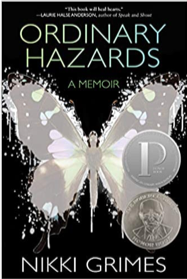
“The truth is, the lives of many teens are difficult. Some are homeless, or have parents in prison, or have been bounced from one foster home to another—or all of the above. Other teens live, as I did, in homes where a parent wrestles with mental illness or alcoholism, or may struggle with these issues themselves. Finally, though you may be unaware, countless teens of every gender, sitting in high school classrooms right now, have been sexually assaulted. Is this subject uncomfortable? Absolutely. But writing about the topic is hardly inappropriate, especially when it’s handled delicately.”
– Nikki Grimes, author of Ordinary Hazards, writing in Publishers Weekly
Where are book bans happening?
Total States and Districts with Bans
-
- States with Bans: 26
- Districts with Bans: 86
Total Bans by State
-
- Texas: 713 bans, 16 districts
- Pennsylvania: 456 bans, 9 districts
- Florida: 204 bans, 7 districts
- Oklahoma: 43 bans, 2 districts
- Kansas: 30 bans, 2 districts
- Indiana: 18 bans, 3 districts
- Tennessee: 16 bans, 4 districts
- Virginia: 16 bans, 7 districts
- Missouri: 15 bans, 6 districts
- Georgia: 13 bans, 1 district
- New York: 12 bans, 3 districts
- Utah: 11 bans, 2 districts
In total, the Index lists book bans across 86 school districts, in 26 states. These districts have 2,899 schools, and enroll over 2 million students. Among the 26 states with documented bans, Texas has the largest number of districts enacting bans (16) and the highest number of individual bans (713). Five states have had at least five districts banning books: Texas, Pennsylvania, Florida, Virginia, and Missouri.
The Central York School District in Pennsylvania is the district with the highest number of bans in the Index at 441. Because the ban emerged in response to a list of resources to support teaching about diversity, the list of banned books included some books that have been targeted in many districts, like All American Boys by Jason Reynolds and Brendan Kiely, The Hate U Give by Angie Thomas, as well as various children’s and middle grade books series, including the Jasmine Toguchi series, as well as biographical titles such as Amelia to Zora: Twenty-Six Women Who Changed the World and titles from the Who Was? series. After student-led protests and national attention, the school board reversed their decision.
“Just because a book is different from one’s lived experience, or makes you uncomfortable due to its subject matter, does not make it questionable. A story that causes one reader to question their own personal biases or cultural understanding may be the same story that allows another reader to truly be seen and represented in literature.”
– Jodi Picoult, author of Nineteen Minutes

Are books going back on the shelves?
In some cases books are returning to the shelves. Out of the 432 titles removed from libraries in North East ISD in Texas in December, the district decided in March to cull 110 titles, and move 11 to schools with older students. The remainder are reported to be returning to circulation. In Granbury ISD, although 130 titles were originally banned while under investigation, the district is now permanently removing eight, returning the rest to library shelves.
Elsewhere, legal threats appear to be having an impact. In Canyons School District, Utah, nine library books removed last year went back on the shelves in January, following an investigation into their removals launched by the state ACLU affiliate. In Wentzville, Missouri, the state ACLU affiliate filed a motion against the school district about the removals of seven books, and in response, the district rescinded a ban against Toni Morrison’s The Bluest Eye. Six other titles, however, remain pulled from library shelves.
Public pressure can make a difference too. In Goddard, Kansas, the school district returned over two dozen books to the shelves after widespread national pressure. And in Central York, Pennsylvania, it was the advocacy spurred by local students, parents and teachers that drove national attention and forced the school board to rescind a ban on over 400 books.
At the same time, the challenges are continuing. There is clear evidence that individuals and groups involved in pushing both formal and even informal challenges are not deterred. In McKinney, Texas, a couple recently submitted 282 individual challenges to unique book titles in February 2022. They copied and pasted the same reasoning for challenging a book title across 282 individual forms, writing: “Contains 1 or more of the following: Marxism, incest, sexual explicit material — in written form and/ or visual pictures, pornography, CRT, immoral activities, rebellious against parents, and the material contradicts the ISD’s student handbook.” Though the couple claims to have read every book, others have observed that all the titles were on the Krause list. Mike Hixenbaugh, reporter for MSNBC, noted on Twitter that the couple would have had to have read 2.5 books per day to have read them all in the 113 days between the date Krause’s list was published and the date they filed their challenges.
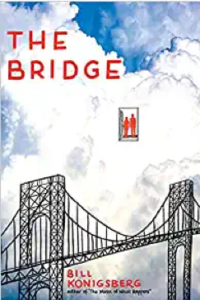
“I am concerned about the young people in the McKinney Independent School District, because in my experience, kids are the same everywhere. There are depressed kids everywhere. There are isolated, at-risk kids everywhere. There are LGBTQ kids everywhere. Getting rid of books from the library won’t change that; it will just make life that much harder and more isolated for those children.”
– Bill Konigsberg, author of The Bridge penned an open letter in response to the parents who want to ban his book in McKinney, Texas
Because local challenges are not always reported on, or, take place out of the public eye, evidence of further challenges is continuing to come to light, including accounts of librarians or teachers in numerous states preemptively removing books or not recommending them in order to skirt controversy. While some books are returning to shelves, the overwhelming evidence suggests that book challenges are growing and the tools and safeguards to protect the freedom to read and students’ First Amendment rights are being disregarded.
In Florida, the new law signed by Governor Ron DeSantis, HB 1467, will make it easier for parents to investigate books and file challenges, and districts will be encouraged to examine their own instructional materials every year with the creation of a statewide list of books banned in all districts. In Georgia, passage of SB 226 will give school principals ten days to respond to any request to remove a book, as well as the power to determine on their own when books are “obscene” and should be removed for being “harmful to minors.” In Tennessee, meanwhile, Governor Lee has signed a bill that not only requires public school libraries to publish lists of all materials in their collections, but to periodically review them to make sure they are age-appropriate and suit the maturity levels of students. They are granted permission to remove any materials found that do not meet this standard. But the bill is also vague; it says nothing about who will have the final say in making these determinations about age-appropriateness.
Finally, although reconsideration policies have long been predicated on a degree of local control, starting at the school-level, there is evidence that in at least one district in Florida, Brevard County, school board officials are considering a policy change, where if a book is found to be inappropriate–and therefore banned–in one school in the district, it will de facto become inappropriate and banned throughout the district. Such a policy change would deprive communities of local control in these matters and make sweeping book bans far easier to enact. Coupled with some of the legislation discussed above, these policies have the potential to facilitate a significantly greater scale of book removals than is currently possible in a short amount of time. As with the patterns we have seen with regard to educational gag orders and bills restricting voting and protest rights, it is highly likely that these bills and policies will also be duplicated and introduced in other states, making such proposals more concerning for the current state of educational censorship.
“Censorship is the child of fear and the father of ignorance.”
– Laurie Halse Anderson, author of Shout
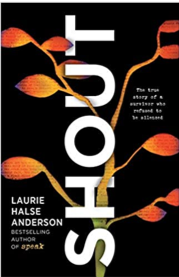
Conclusion
Book bans have an ignominious history–they have been the tools of heinous regimes from Nazi Germany to apartheid South Africa. Wrestling with how we teach history and tell our stories is part of a lively democratic discourse. But resorting to draconian tactics of banning books, silencing writers, and attempting to erase stories and communities represents an unacceptable attack on First Amendment freedoms fundamental to democracy.
Learners of all ages benefit tremendously from having access to diverse stories and histories in literature, which allows them to see themselves represented in the materials they read and to gain understanding of and empathy for those who may be different from them. Public school districts that ban books risk creating an environment in which students feel excluded, and failing in their responsibility to educate young people to be informed citizens of a pluralistic and diverse society.
These trends also pose a threat to the freedom to write, potentially intimidating authors from writing about any topic that could be considered taboo or has been targeted by censorious school districts, and publishers from taking the risks of putting such artistic work out in the world. In many cases the books targeted are those that depict identities and stories that have only recently found their way onto shelves. This campaign is a threat to those gains. The book banning documented here raises an alarming concern not only that the rising generation might have reduced opportunities to explore the world of literature; but that this campaign could have deleterious effects on freedom of expression, which must be the bedrock of public schools in an open, inclusive, and democratic society.
Methodology
PEN America conducted an analysis of all relevant news stories on challenges, restrictions, and bans to school library books, curriculum, and classroom libraries anywhere in the United States, over a nine-month period, between July 2021 and March 2022. We consulted school district websites, corresponded with librarians, authors, and teachers, and reviewed letters to school districts organized by the NCAC. We confined the analysis to actions that resulted in removals or restrictions of books of any kind for at least a period of one day. Our category analysis of book titles was based on standard publishing information provided through marketing and sales materials by publishers for books, as well as relevant reading and review of the books in question. Policy analysis was informed by guidelines from the NCAC and the ALA, and school districts’ publicly available policies pertaining to reviews or challenges regarding instructional or library materials.
PEN America’s Index of Book Bans does not include every instance in which a book has been challenged, as not all such challenges have ended in bans, and many are still in process. Rather, it offers a count of books banned in accordance with the definitions and categories described above. Additionally, some cases may not be captured here, as detailed reporting about book bans is sometimes unavailable. In some cases, PEN America has relied on information sent by librarians or available from other organizations to complement information documented by news media. Soft censorship, meaning the quiet removal or limitation of books, do not always result in bans, nor are they always trackable.
Acknowledgements
This report was written by Jonathan Friedman, Director, Free Expression and Education, and Nadine Farid Johnson, PEN America’s Washington Director, based on research by Tasslyn Magnusson, Ph.D., an independent consultant. The report was reviewed and edited by PEN America’s Director of Research, James Tager, as well as PEN America’s Senior Director for Free Expression Programs, Summer Lopez, and PEN America’s CEO, Suzanne Nossel. PEN America would like to thank Sabrina Baeta and Isaac Engelberg for research assistance. PEN America is deeply grateful to Markus Dohle and Hachette Book Group for their support of PEN America’s work to uphold the role of books in our society and defend the freedom to read. We also thank the PEN America Children’s and Young Adult Book (CYAB) Committee for their steadfast advocacy against book bans over many decades, and into the present. Finally, we extend thanks to the many authors, teachers, librarians, parents, students, and citizens who are fighting book bans, speaking at school board meetings, and bringing attention to these issues, conversations with many of whom inspired and informed this report.


